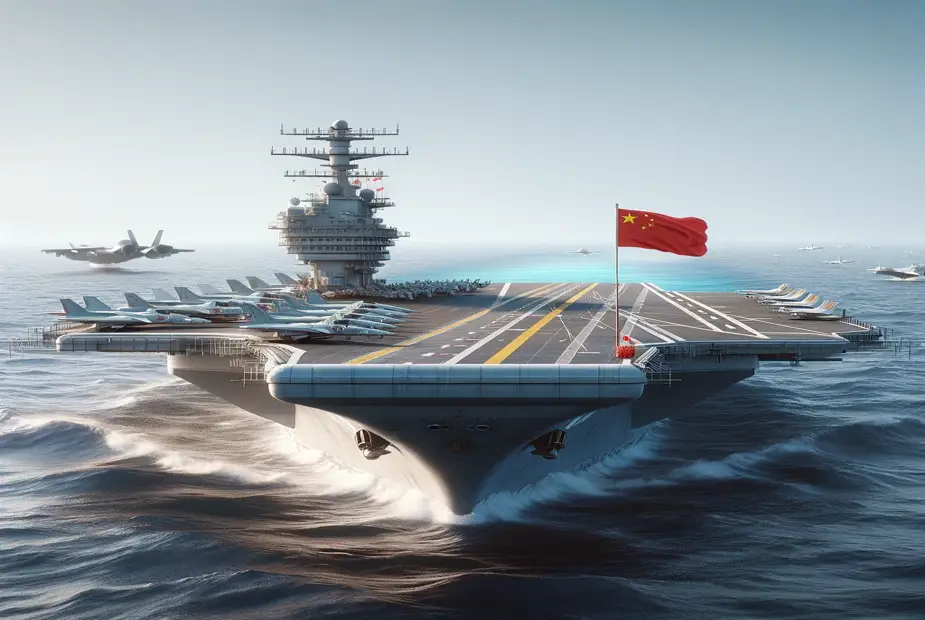Breaking news
China's Naval Transformation, Beijing Builds US-Inspired Aircraft Carrier to Bolster Fleet.
During the annual legislative meeting in Beijing, People's Liberation Army (PLA) Navy political commissar Yuan Huazhi revealed China's ambitious plan to develop its fourth aircraft carrier, marking a strategic advancement in its naval capabilities. This fourth carrier is part of China's ambition to develop a blue-water navy.
Follow Navy Recognition on Google News at this link
 AI concept of Chinese Aircraft Carrier (Picture source: AI image for Army recognition )
AI concept of Chinese Aircraft Carrier (Picture source: AI image for Army recognition )
The suspicion of a fourth Chinese aircraft carrier being constructed originally emerged from Open Source Intelligence (OSINT) investigations. These inquiries pointed to activities at the Jiangnan Shipyard, where satellite imagery and other publicly accessible data sources revealed patterns and developments consistent with the building of a large naval vessel, presumed to be an aircraft carrieralongside the Fujian , currently in catapult tests .
This forthcoming carrier is set to be nuclear-powered, distinguishing it from its predecessors and underscoring China's commitment to expanding its maritime strength with more advanced and sustainable technology.
The announcement signifies a pivotal shift in China's naval strategy, as this will be the country's first nuclear-powered aircraft carrier, aligning it with the capabilities of a select group of naval powers that operate nuclear-powered carriers, such as the United States and France. The move is interpreted as a clear signal of China's intention to enhance its blue-water naval capacity, enabling longer deployments without the need for frequent refueling stops and bolstering its ability to project power far beyond its immediate geographic surroundings.
Yuan Huazhi's announcement did not delve into specific details regarding the size, capabilities, or expected timeline for the completion of the aircraft carrier. However, the shift towards nuclear propulsion suggests a significant leap in technological advancement and operational capability for the PLA Navy. Nuclear-powered vessels can operate at higher speeds for extended periods, a crucial factor in strategic deployments and power projection across global waters.
China's navy in mutating in a blue-water navy, concept refers to a maritime force capable of operating globally, far from a country's home shores, across the deep waters of open oceans. Unlike "green-water navies," which are designed to operate in the more coastal, shallower waters near a country's shores, blue-water navies have the capacity for extended range and endurance, enabling them to project power, conduct long-range expeditions, and secure international sea lanes.
A blue-water navy is a critical component of a nation's ability to exert influence and maintain security beyond its immediate geographic region. It typically includes a fleet of aircraft carriers, submarines, and other large warships equipped with long-range logistics and capable of carrying out a variety of missions—from deterrence and strategic defense to humanitarian aid and disaster relief.
The development of a nuclear-powered aircraft carrier represents not only an advancement in China's military capabilities but also a strategic move within the broader context of international defense dynamics. It signals an intent to secure a more pronounced role on the world stage, amid growing maritime competition, particularly in the Pacific region where the U.S. Navy has been a dominant force.


























